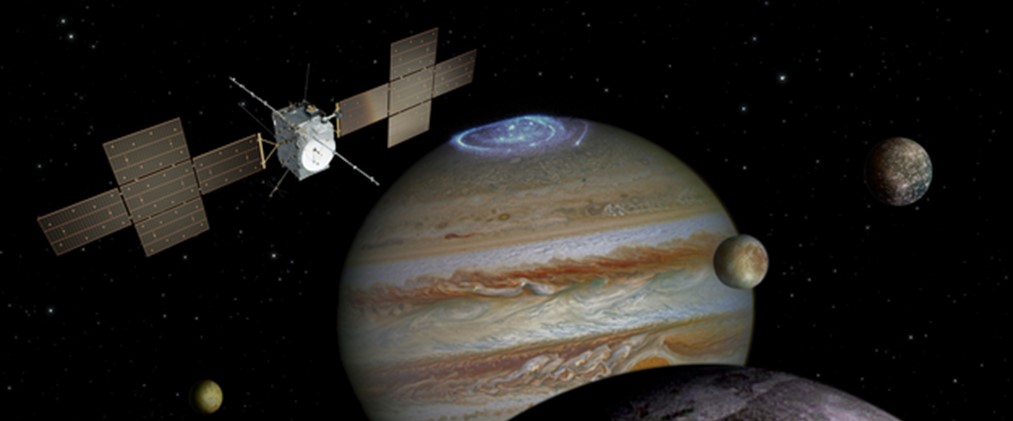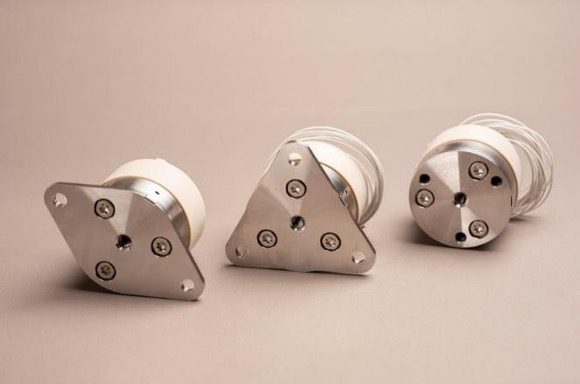- Sectors
- Aerospace & Defense
- Big science
- Fintech
- Insights

The JUpiter ICy Moons Explorer (JUICE) is an ESA Mission to investigate Jupiter and its moons. By examining the complexity of the Jupiter system, the objective is to learn more about how habitable areas form in our solar system and beyond.
JUICE is the first large-class mission in ESA’s Cosmic Vision 2015-2025 programme. It is scheduled to launch in 2022 and will embark on a 7-year cruise toward Jupiter, entering orbit around the giant planet in 2030. JUICE satellite explorer will spend almost four years making detailed observations and studying Jupiter’s magnetosphere, turbulent atmosphere and three of its icy largest moons, Ganymede, Callisto and Europa.
The JUICE spacecraft is equipped with more than ten state-of-the-art instruments that will carry the most powerful remote sensing, geophysical, and payload complements ever flown to the outer Solar System. One of those instruments is the J-MAG or JUICE magnetometer. This instrument is equiped with sensors to characterise the Jupiter’s magnetic field and its interaction with that of Ganymede, as well as to study the subsurface oceans of the icy moons.
Frentech Aerospace s.r.o. (within a Czech Consortium) is the prime contractor and oversees the design and qualification of the boom suitable for the JUICE magnetometer experiment. The purpose of this boom is to place some of the instruments needed for scientific experiments away from the magnetic disturbances of the spacecraft. The boom is a structure consisting of three segments of composite material (CFRP) and houses five of the instruments that are required for the scientific experiments. The boom is initially stowed and later fully deployed by means of a hold-down and release mechanism.
The boom has to be secured to the spacecraft to assure the proper stiffness.
Another critical factor is the use of materials causing low or no magnetic interference in the scientific instruments of the boom.
Finally, the use of field resettable HDRMs was highly preferred for operational purposes, to save cost and time during the validation tests at system level.
ARQUIMEA proposed a solution for the HDRM based on the company’s Hold-Down and Release Actuator called REACT. More specifically, the device REACT v2 15KN extended operation temperature range was used.
One Engineering Model was manufactured and delivered to validate the solution prior to the delivery of two Flight Models. The mechanical and thermal vacuum tests for the acceptance of the EMs was performed at instrument level.
The HDRMs were validated and tested considering the design and operation requirements of the spacecraft and the specific characteristics of the magnetometer boom. The two Flight Models were delivered to Frentech in September 2019.
In the next phase, the Frentech Aerospace team will start to integrate and test the Qualification Model of the boom.
ARQUIMEA’s REACT devices are low-shock Hold-Down & Release Mechanisms (HDRM) which function is to firmly fix a payload during transportation or launch and later release it by electrical activation. REACT implements a redundant trigger with two different motorization options based on Shape Memory Alloys, covering wide actuation temperature ranges and providing manual reset capability to the end user.

ARQUIMEA’s REACT proved to be the optimal solution for such a critical operation like the release and deployment of the magnetometer boom.